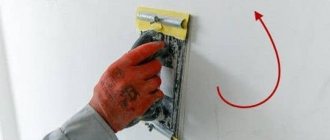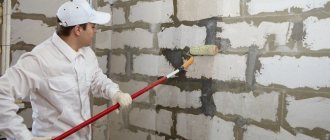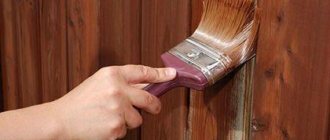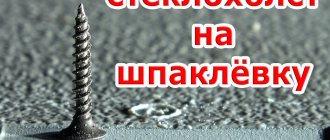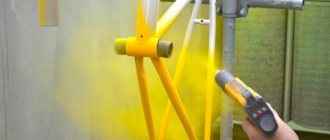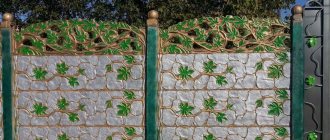Car degreaser
In modern life, a car is not only a means of transportation, but also a faithful, reliable companion that helps out in difficult situations. Of course, a car is a complex mechanism that is also susceptible to breakdowns that need to be fixed.
If you approach the repair work of the body, glass or other elements in an inappropriate manner, they will quickly become unusable, however, subject to high-quality and competent repairs, the units will last a long period of time. That is why, before carrying out certain work, a special degreaser is used for the car, which, depending on the composition, is used for the body, glass or other parts of the vehicle.
Sediment inhibitor for water treatment
Threshold inhibition is considered the most effective method of inhibiting deposits. Phosophonates—phosphorus-containing complexons that form complex compounds with metal cations—take part in the inhibition process. Complexons are polybasic acids that, when dissociated, can change the pH of a solution in the range from 2 to 14. They are capable of forming stable compounds with ions of alkali, alkaline earth and rare earth metals. For stable inhibition of sedimentation, it is sufficient to add from 1 to 10 ppm of phosphonate to a saturated solution of calcium carbonate.
Metal complexonates have good solubility and are absolutely harmless to humans, therefore they can be used not only in industrial water treatment, but also in the production of drinking water. They are adsorbed on the surface of crystallization centers and block the growth of crystals. In addition, they soften old limescale formations and rust, which subsequently acquire a colloidal form and are removed.
Types of sedimentation inhibitors for osmosis
The content and molecular composition of hardness salts varies depending on the origin of the water. Therefore, an antiscalant for osmosis is selected based on the results of laboratory tests. Sedimentation inhibitors interact differently with carbonate and sulfate anions and differ in the degree of interaction with metal ions. One of the parameters worth paying attention to is the presence of iron in ionic and colloidal form. It reduces the effectiveness of many inhibitors, such as polyacrylic acid compounds.
Degreasing the car before painting
Undoubtedly, before painting, the car body needs to be degreased, which allows high-quality protection of metal elements from corrosion. Such an action when repairing body parts is a common occurrence when performing a complete and high-quality restoration of a car. In this case, we need to consider how exactly the procedure is performed:
Vehicle body repair also includes the need for subsequent polishing of the paintwork to give the body element an attractive appearance and strengthen the top layer of paint.
Important. When choosing a degreaser for a car, you should proceed from its intended purpose, so that all the properties of the composition are used to their full extent.
Types of degreasers for cars and selection criteria
In practice, there are many options for such compositions that are used for specific purposes when repairing a vehicle. As a rule, all varieties available for sale are divided into the following separate categories:
In each individual case, a specific composition is provided that has the appropriate properties and composition. In practice, the possibility of mutual replacement is not provided, but in some cases there are universal substances that can be used everywhere, including for tire fitting during the restoration of car wheels.
When choosing this composition option, you need to take into account the available budget, the manufacturer of the corresponding material, the surface and purpose of the work, as well as the principle of degreasing. When choosing a special component, it is necessary to take into account all the criteria so that later when using it you do not encounter significant problems or difficulties due to illiterate selection.
Important. The main task of the degreaser is to cover the surface with an appropriate thin film, while imparting the necessary properties for adhesion or other action.
For glass
In this case, we are talking about compositions that are used when washing glass surfaces, as well as at the time of its restoration. Here, standard alcohol or wax compounds are used, which effectively clean the surface of the dirt present, as well as accumulated fat accumulation. To remove such contaminants, use a clean, soft cloth, which will prevent further scratching of the coating during cleaning.
Degreasing the glass coating is necessary so that there is sufficient visibility, and in addition, during restoration, it is possible to carefully fill the damaged area with a special compound, and then perform the necessary polishing. In such a situation, it is not recommended to use antiselicone or other types of chemical solutions, as they can damage the coating of laminated automotive glass.
Before painting
Immediately before the primer is applied to the metal part, immediately after cleaning it is coated with an appropriate degreaser, which correctly creates an additional protective film on the coating, and in addition enhances adhesion from the metal to the primer. Also, this composition option allows you to hide all small scratches present on the surface, so that alignment is not required later.
In such situations, any solvent is usually used, and kerosene or high-octane gasoline can also be used. For application, any auxiliary fabric with a soft coating can be used, which during operation will not damage the metal element being processed before directly applying the paint coating.
Before polishing
Since any version of the painted part must be brought to a glossy finish, additionally, after applying the appropriate paint surface, a procedure for polishing the outer part of the body element is performed. In such a situation, wax-based degreasers are used, which allow you to quickly and efficiently level the entire surface.
This substance is applied evenly immediately before polishing, which is carried out using a soft diamond disc and drill, or a special machine for polishing surfaces. To apply the substance, you can use an ordinary soft cloth, which will not damage the painted element if the substance is evenly distributed to degrease the surface.
For rubber
In this case, we are talking about car wheels, which also at certain stages require restoration and repair. This involves the use of special silicone or anti-silicone solutions, which are used to treat the surface for enhanced contact between the tire and the disc. Additionally, it is worth highlighting the use of such a solution in the process of repairing the integrity of the tire, at the time of installing a patch or harness.
This substance is applied together with water under compressed air, after which it dries quickly, while all present components are removed from the surface, which also enhances adhesion to the specialized adhesive applied to the surface. Subsequently, after repairing the tire, the damaged part is also degreased again to improve the adhesion of the patch to the surface of the tire.
Important. To repair any elements of a vehicle, it is also necessary to degrease the surface, which is necessary to remove the existing fatty layer and other harmful flora from the coating; in addition, these types of compositions are used to improve adhesion.
When repairing or servicing any structural element present in a car, mandatory degreasing of the surface is required. Such an event is necessary in order to properly clean and prepare the surface for the upcoming work. Application of the appropriate composition can significantly improve the quality of the subsequent coating and increase adhesion to it. Of course, various types of car maintenance work are carried out, which is why compositions with appropriate properties are required.
Here, distribution into several separate classes is provided, which makes it possible to distribute substances into several classes. There are also universal material options on sale, but their properties are often insufficient to perform high-quality and appropriate restoration of the surface of metal, rubber or glass.
Source
How to degrease metal before painting
The main thing you need to take care of when degreasing is the complete removal of fatty elements from the surface that is intended for painting. All kinds of oil contaminants that are not visible at first glance, but are actually present on the surface, can act as fatty elements.
There are many different formulations that can remove fatty elements from the surface. The most effective among them are:
- Kerosene or products based on it;
- White Spirit;
- Licensed nitro-based solvents;
- Degreasers made with complex alcohols.
Please note: There is a common misconception that gasoline is a good degreaser. In fact, it is better not to use it when it comes to painting car parts. This is due to the fact that gasoline contains quite a lot of oil elements. If the gasoline is not of the highest quality, it will create an additional oil film on the metal that is not visible, but when applying paint it will prevent it from adhering well.
Almost every metal element of a car has rust in one form or another. Before degreasing the surface, you need to clean the metal, remove any dust that has formed from it and treat it with a product based on orthophosphoric acid, which can combat iron oxides (corrosion).
Please note: In automotive stores, phosphoric acid-based chemicals are most often referred to as rust converters.
After the surface has been treated with a composition based on orthophosphoric acid, the selected degreaser itself should be applied. Solvents are fairly volatile compounds, so immediately after applying them with a rag, you can begin painting (or applying primer). It is important to remember that you can only work with solvents in a well-ventilated area, since such products are highly toxic. It is also recommended to use protective gloves and a respirator when working with solvents.
Important: If you are doing local painting of a small piece of painted surface, do not use nitro-based solvents. If they come into contact with the applied paint, they will cause it to corrode. In such situations, it is better to give preference to white spirit or a solvent based on complex alcohol compounds.
Please note that after degreasing the surface, it is better to begin painting or priming work as soon as possible. A few hours are enough for various dust and other elements to adhere to the surface, which will prevent high-quality painting.
( 160 votes, average: 4.46 out of 5)
Water in engine oil: why it appears, how to fix it
What to do if you poured antifreeze (antifreeze) into the washer fluid reservoir?
Related Posts
How to degrease the surface of a car body before painting
Preparing a vehicle body for painting is a process consisting of several important steps.
Proper filling, priming of the vehicle surface, and degreasing the metal before painting are of great importance. The quality of the paintwork depends on what you use to degrease the surface. Before treating the surface of the machine, it must be thoroughly washed, removing dust and dirt. This is not always enough, because some substances are not washed off with water. Therefore, the surface of the car requires degreasing with special means.
Why degrease metal before painting?
To prepare the metal and ensure normal adhesion to the paint coating, it is necessary to degrease the metal before applying paint. Adhesion refers to the joining of materials to each other at the molecular level. If there are “foreign” molecules between the molecules of one surface (or substance) and another substance, this will lead to a decrease in the quality of their attachment to each other.
Without delving into the chemical processes of applying paint, it is worth saying that various oily residues, dust, debris, etc. are what will prevent the paint from properly adhering to the surface on which it is applied. For a car, which is not a static object and is often in motion, it is important that the paint is attached to the surface as firmly as possible, otherwise it will fall off due to strong vibrations or mechanical impact from the environment.
Types of degreasing products
Modern industrial technologies provide car enthusiasts with 3 types of products that help remove stains during the degreasing process before painting.
Types of compositions:
Of these, car enthusiasts choose the most suitable product when it is necessary to decide how best to degrease metal before painting. Experts recommend choosing a composition that matches car enamel. For oil paint, turpentine is best, the particles of which do not create a conflict, even when mixed with paint. Before work, you should familiarize yourself with the composition of the auto enamel placed on the container and prepare the surface using the appropriate solvent.
When determining how to degrease a car body before painting, you should evaluate several factors that influence the correct choice:
When looking for a product to degrease a surface before painting, preference should be given to products from manufacturers with a solid reputation. Even if it is a little more expensive, the effectiveness of its use will be several times higher than that of using cheap chemicals.
Degreasing agents
If a person decides to paint a surface in a house, apartment, or country house, any suitable product is used for degreasing, which is applied to a lint-free microfiber cloth or other suitable material.
This method is not suitable if preparation for painting the car body is required. Of course, it is better to entrust the cleaning and painting of a car to a professional who will do the job efficiently. In some cases, you can remove the grease film and protect the car body from corrosion with your own hands.
White Spirit
Almost every car enthusiast has the organic solvent White Spirit, and repair shops use it regularly. White spirit is intended for the initial treatment of the body, after which it is practiced to apply alcohol mixed with orthophosphoric acid to remove residual contamination. The solution is prepared by combining substances in a certain proportion.
Using white spirit you can safely clean car parts; the composition will not harm the metal surface. Low cost is another plus. The downside is the strong smell. Some car owners replace the solvent with trichlorethylene, but it should not be used on aluminum alloys - there is a risk of fire.
Gasoline, acetone, other analogues
All of these products are good solvents for grease, mastic, and paint. Diesel and kerosene have a rather dense structure and are difficult to clean, but their composition is suitable for degreasing.
Antisilicone
Antisilicone is a colorless liquid, a remover for removing silicone, grease, and oil. This substance is intended to remove contaminants from steel, aluminum, stainless steel, plastic, galvanization, and varnish coatings.
It is applied to the surface, then wiped with a dry cloth or paper towel. You need to wear a mask and gloves when working, and the room must be ventilated.
Antistatic
The surface can be degreased before painting using an antistatic agent. It is especially effective to do this on plastic, which attracts dust due to its ability to become electrified. It will be difficult to remove the grease film, but after treating the surface with an antistatic agent it will be much easier.
Alkalis
The preparations in this group contain detergent chemicals with an alkaline effect. They can wash away any contaminants, including grease. Usually used in everyday life.
A roller is used to clean plastic and concrete for application.
Before painting a car, use alkalis with great care, then rinse the surface thoroughly with water and dry the parts. Do not apply large amounts of product or create strong foam.
Ultrasound and other methods
A new method of surface cleaning is the use of solutions coupled with baths with an ultrasonic field. The method is suitable for degreasing small parts whose surface is uneven, has complex curves and includes various mechanisms (for example, watches). Due to the high cost, the method is not suitable for large products.
There is a method of electrochemical degreasing. It is also carried out in baths where gas is supplied from electrodes. Surfaces are cleaned with chemical solutions using current. Typically, such processing is used in production and industry.
Working with degreasers
The work is performed in a room equipped with a ventilation system, away from open sources of flame, with bright light. To avoid getting metal shards or dust particles in your eyes, wear goggles. The respiratory tract is protected by a respirator, since many substances are toxic and contact with them leads to damage to internal organs. Protective clothing will help avoid negative consequences when chemicals come into contact with the skin. During the process, it is strictly forbidden to smoke or come into contact with fire.
The surface is degreased after the sanding stage before painting. You need to prepare two cotton napkins. One applies the solvent, the other is needed to get rid of excess product after use. The treated surface must not be touched to avoid leaving stains. The quality of the work can be checked by attaching a white sheet of paper, on which the remaining foreign substances will be visible. Painting must be done immediately after degreasing, otherwise dust will settle on the surface again over time.
Two-step cleaning
Professional cleaning of a metal surface consists of two stages: treatment with white spirit, application of a solution of orthophosphoric acid to iron, which is susceptible to corrosion. It is difficult to prepare an acid composition on your own, so it is successfully replaced with anti-silicone from auto chemical stores. The product is absolutely harmless and non-toxic.
Sandblasting
You can prepare the surface of the car for painting without chemical treatment using sandblasting. This process will allow you to clean all types of contaminants, even greasy stains from oil, bitumen, and mastic. The working principle of the cold abrasive method is to clean the surface with sand under strong air pressure. The method is used to remove dirt, scale, dust, traces of rust, and grease. An important advantage of sandblasting technology is the creation of an adhesive relief. Microdeformations help increase adhesion to the enamel layer when painting. This coating is reliable and durable.
The equipment pumps air, which under high pressure delivers abrasive elements that remove all excess under the manual control of the operator. The process of working with a compressor requires certain skills. The method is considered the most effective.
Painting a car requires responsibility and accuracy. Not only the attractiveness of the surface, but also its protection from corrosion depends on the quality process. To create a reliable, durable coating, special attention must be paid to each preparatory stage. Degreasing is one of the most important positions. If oil particles remain on the surface, the enamel will be distributed unevenly, peeling off in places. After some time, such a surface will again need painting.
To avoid additional costs, you need to choose the right type of solvent and properly treat the car before applying auto enamel.
Source
Degreasing car surfaces before painting
A healthy interest, a desire to gain new experience and the opportunity to save some money - these are the main motives of car enthusiasts who decide to do body repair on their own. To paint a car correctly and without mistakes, you need to know some of the subtleties of the technology of this process. Some aspects of it, such as defatting, are not obvious. If you ask the question: “Why degrease a car?”, most garage technicians will not really answer it. But neglecting degreasing can ruin the result of all the work.
The procedure for carrying out repair work
The technology for carrying out body repairs is approximately the following:
The final stage is polishing, after which you can enjoy a job well done.
In this chain of actions, degreasing is mentioned three times. The most important stage when degreasing is simply necessary is preparing the body before painting. Neglecting this step may result in raised or shriveled areas of paint.
This is what paint looks like applied to a poorly degreased surface
Washing the Grease Remover Machine
The first thing you should do before starting body repairs is to thoroughly wash the body using powerful surfactants (for example, dishwashing detergent). This operation will make it possible to wash off fingerprints, residual oils and other technical fluids.
The next stage is carried out using special compounds - degreasers. As a rule, these are white spirit, nefras, mixtures of similar solvents or water-alcohol compositions. Most manufacturers of paint and varnish products have proprietary degreasing compounds.
You should not use volatile solvents (such as 646, NT, acetone), as they can dissolve the bottom layer (paint, primer). This will weaken adhesion (stickiness) and ruin the surface. Kerosene, gasoline, and diesel fuel contain some fat, so they should not be used either.
The main task of this stage is to remove bitumen stains, persistent silicone stains, random fingerprints, and carry out finishing preparation before painting.
Degreasing a car body with your own hands is within the power of every owner.
We degrease efficiently and safely
The degreasing operation itself looks like this: apply the composition with a rag generously soaked in degreaser and rub it with a dry cloth. Instead of a wet rag, you can use a spray bottle.
It is important to use rags that do not leave lint. There are special napkins made of non-woven material on sale, as well as thick paper towels. The rags must be constantly changed, otherwise instead of removing greasy stains, they may smudge.
When carrying out work, do not forget about safety precautions: you should protect your respiratory organs, eyes and skin of your hands. Therefore, all operations should be carried out either in the fresh air or in a ventilated area, and the cost of rubber gloves, safety glasses and a respirator will be significantly lower than the cost of medicine.
After degreasing, do not touch the surface with your hands or clothing. If you do touch it, degrease the area again.
Video: expert recommendations for degreasing a car with your own hands
So, you already have all the knowledge that is necessary to carry out high-quality preparation of the body for painting. Neglecting these simple rules can significantly worsen the results of the work being carried out. So degrease properly and safely while enjoying what you do with your own hands.
Simple and affordable means
I can say that there is no fundamental difference in what exactly you need to degrease. Some people have their plumbing pipes processed, while others are restoring paintwork on their cars. The main thing here is to be careful and follow the recommendations.
Having looked at the thematic forum, I noticed that there are active debates regarding what can be used to degrease and what cannot be used. Having solid experience in this matter, I can share my own observations and knowledge.
- White Spirit. One of the most common household and car maintenance products. The liquid is extremely simple and affordable. Easily removes dirt and copes well with deposits. But to remove stubborn fat you will have to make extra efforts. Characterized by a pungent odor. Use strictly in a ventilated area or outdoors, but not under the sun;
- Acetone. It should be used with the utmost care. Acetone differs in that it reacts actively with certain metals and chemical compounds. In the case of a car, it’s not worth the risk;
- Kerosene. If you need to degrease metal, only purified kerosene without any impurities will do. But it is better to take it in extreme situations. When a large area of the body is subjected to treatment, kerosene is prohibited. Here it is better to take gasoline with a high octane number;
- Soap solutions. All kinds of liquids based on ordinary detergents or even soap. A good option if you need to remove dirt from small areas made of fragile metal.
After treatment, it is important to ensure that the remaining product dries completely.
Never start painting if the solvent remains on the body.
Solvents and particularly caustic compounds are not recommended in practice. If you value your own car, such a risk can have unpleasant consequences. The main problem is that sometimes they find out about the negative effects of the degreaser after the painting work is completed.
Car degreaser: how to choose the right one
Issues discussed in the material:
Not all car owners know what a car degreaser is, why it is needed and when its use is really necessary. Often, car enthusiasts use regular acetone or the usual multifunctional white spirit to clean surfaces. However, this choice is not always safe.
In this material we will talk about different surface degreasers, their advantages and disadvantages. The criteria for choosing a product will be announced. We will also tell you how to properly degrease your car at home.
Degreasing plastic
It should be noted that plastic does not bond well with other materials and to improve its adhesion it is necessary to carefully prepare the material. On a production scale, parts made from this material are increasingly soldered together, but at home it is very difficult to do this efficiently.
How to degrease the surface before gluing plastic? Typically, alcohol-containing liquids or acetone are used for this. As a rule, this treatment is sufficient, as can be verified by performing a wettability test.
After the test has been carried out on an inconspicuous area of the part and the safety of the liquid has been confirmed, you should saturate a cloth with it and carefully treat the entire surface to be glued.
Why degrease your car?
The purpose of this procedure is to clean the surface of the vehicle from grease, oil, lubricants, adhesive or sealant residues, bitumen stains, pastes, removers, etc.
As a rule, specialists use a car degreaser before painting or carrying out other work. Without degreasing and with poor quality processing, painting will need to be repeated. Paintwork materials do not stick to an uncleaned surface, as evidenced by wrinkles and swollen bubbles on a dry body.
If you use the car in the city (although the terrain is not so important), then after a while you can notice the annoying consequences of improper painting:
How to fix this problem? There is only one way out - careful washing, which may require previous polishing. But before that, you need to treat the body to remove the remains of city soot, hand marks, and other micropollutants. For these purposes, you need a high-quality degreaser.
Fat should be removed from the body before external tuning, when films, tape, and special stickers for cars are attached to the body.
Types of automotive degreasers
Today the market offers many products for degreasing cars. According to their composition they are:
To maximize the effect, use a degreaser for both types of cars. Acid-salt solutions work well with oxide films, but cannot remove fats.
Typically used in everyday life:
Car degreasers in the form of emulsions are ideal for removing complex contaminants. They combine the best qualities of aqueous-alkaline solutions and organic solvents. Concentrates containing inhibitors, additives, surfactants (for example, Docker, Dekamet, Chistomet) have a quick effect.
In addition to cleaning the surface of the car, such degreasers protect the body from traces of corrosion. The concentrated solution is diluted with water in different ratios, which determine the contamination of the part of the body that is to be painted.
If you do not find special products, use an alternative option - a car degreaser, which is available. In this case, you need to choose it taking into account the qualities of the surface being cleaned. If you have paintwork (especially old paint), primers and plastic, do not use solvents from the series 645–647, 650, etc. They are quite aggressive and can dissolve all of the listed materials. Do not use gasoline, solvent, diesel fuel, or kerosene.
We recommend
If you need a degreaser on bare metal, then solvents work well for this purpose. They will not corrode the iron surface. The same applies to acetone, which is prohibited for paintwork materials, but is allowed for metal parts of machine bodies. Chemical solvents are recommended for cleaning wood, pipes, profiles, metal structures, etc.
Can white spirit be used as a car body degreaser? Opinions vary on this issue, which is why it causes lively debate in technical circles.
Today, white spirit does not lose popularity among car service specialists. What properties attract craftsmen:
But still, at the preparatory stage before painting, it is better to abandon white spirit in order to prevent defects. It should be used for its intended purpose, and not as a degreaser for body repair. In addition, it is a solvent with a strong odor that takes a long time to evaporate and leaves an oily film.
We recommend
When treating your car before painting, you can do without harsh chemicals, using, for example, the sandblasting method of cleaning. Under high pressure, sand particles bombard the surface, removing grease and dirt.
How to use transition solvent
The method of using a solvent for transitions can also consist of mixing it with a portion of varnish or enamel, while the surface is processed many times. At first, the proportions are usually as follows - three parts of solvent to one part of paint, and then the solvent is added at a ratio of one to one to create a smooth transition.
In essence, in a spray bottle we get a colored solvent, which, however, is too liquid for an inexperienced car enthusiast to avoid drips. In addition, in a hurry, it is difficult to measure the correct amount of solvent, which is why professionals recommend painting the surface first, and only then using solvent for the transition.
You can use a solvent to complete the painting procedure: to do this, after applying the last layer of varnish or enamel, pour a little solvent into a spray bottle and spray it along the transition contour. Typically, the solvent is applied in 1-2 approaches with an interval of 30 seconds, trying to prevent paint drips. After the composition has dried, the visible border of the change in shades should be smoothed out, and you can begin to sand it with sandpaper and then polish it.
Common mistakes when using a transition solvent
The main mistake when working with solvent using this technology is using too much solvent, which will lead to drips and discoloration of the paint.
I would also like to warn novice repairmen against applying the transition solvent over the entire area of the part: we emphasize once again that it only treats the border (contour) of the transition.
Which solvent to choose
You can buy transition solvent at any auto store or construction market, where it is sold in jars and on tap, which is convenient if you need to paint a small part. Aerosol transition solvents are especially convenient for beginners, since they do not require dilution or the use of a spray bottle or spray gun, but are simply sprayed onto the transition area.
A solvent for transitions in the form of an aerosol is also a very economical solution, because the solvent poured into the spray bottle will have to be poured out of the jar at the end of the work, and there is a danger of wasting the material. In the case of an aerosol, you use strictly the required amount of solvent, and there is no need to pour anything out, not to mention keeping a special sprayer for this composition.
What else you need to know about transition solvents
Finally, let us warn you that the transition solvent is an active composition, which means that when it gets on the surface of the part, it begins to “boil”, and small bubbles form on the treated area, which, however, are easily removed at the polishing stage.
But the really important feature of the solvent is its fluidity, which requires the most careful handling of the composition. You can practice working with a transition solvent using ordinary water as an example, because they are very similar in viscosity. If water flows when simulating solvent spraying, then solvent will also flow. And this is not good, because, despite the fact that drips from the transition solvent can be removed during polishing, it is still better to avoid their appearance.
If you want to learn more about transition painting technology and the role of solvent in this process, we recommend watching the following video:
Which car degreaser to buy?
When choosing a product for removing grease stains from a car body, focus on the following indicators:
1. Degreasing before painting
Do not forget that the procedure for cleaning each part of the car body from grease is carried out at all stages of paint and varnish work, namely: before puttying, priming and painting itself. And every time you need to follow the procedure exactly. Otherwise, “volcanoes” (swells) and wrinkling of the paintwork will appear on the surface of the car, and peeling of the primer or paint will occur (depending on which layer the degreaser is missing).
Reasons for the appearance of greasy spots or an oil layer on the car body:
As a rule, a special degreaser, anti-silicone, is used to clean the body. This is the most popular remedy, which is rightfully considered universal. It not only removes grease of technical origin, but also removes organic fingerprints that usually appear when processing a particular part. Thanks to anti-silicone, the surface is degreased, which allows for high adhesion.
There is one more remedy, no less useful than the previous one. This is the final degreaser for cars on a water-alcohol basis, which is used when painting the body. Such compositions remove sugar, salts, weak acids - everything that anti-silicone cannot do, but is necessarily present in water, traces of organic sweat or fat from the fingers. Sweat and water remain on the parts after they have been processed by a specialist. Therefore, it is better to add a water-alcohol type of degreasing to anti-silicones.
Drivers are wondering which degreasers are best to choose for car bodies? First of all, solutions packaged in metal cans. It is known that the plastic of a jar can dissolve and mix with the substance that is poured into it. This reduces the effectiveness of the mixture and changes its smell. It is useful to know that anti-silicones are divided into three types depending on the type of processing: for coarse, medium (fine) degreasing and plastic. Please check these details when purchasing a degreaser.
We recommend
In addition, grease removal solutions are distributed according to application (i.e. application phase), namely before painting, polishing or washing. For example, the Peresvet cleaning product, which is always on the shelves of car dealerships. It is perfect for treating the body before painting, but is not suitable as a degreaser for car washing or vehicle polishing. The reason for this is the aggressive composition of the solution, similar to Galosha (or Nefras) gasoline.
As for certain products that are preferred by craftsmen for performing body work, the best degreasers for cars are the following:
And don’t forget to read the instructions before purchasing to understand why the product is used and for which cars it is not suitable. As we mentioned above, chemical degreasers such as solvent 646, acetone and other aggressive compounds are prohibited for paintwork.
2. Degreasing before polishing
If you don’t want to paint or change the color of your car, but only plan to polish the body, you still can’t do without removing grease. We discussed the reasons for performing this procedure above. One thing is important: if you do not use a degreaser when polishing a car, the surface of the body will not be perfectly clean. This means that the polishing agents may soon peel off and the entire effect will be reduced to zero.
Degreasing before painting
Remember that the degreasing process must be performed at each stage of paintwork on a car body part - before applying putty, before applying primer and immediately before painting. Moreover, at each stage this must be done carefully and in compliance with technology. Otherwise, there is a high probability of swelling on the paintwork, so-called “volcanoes”, peeling of the primer and even paint (depending on which layer the degreaser was poorly applied), and wrinkling of the paintwork.
Grease stains and/or layers on car body parts occur for the following reasons:
- After human fingers touch the part.
- As a result of glue from adhesive tape or masking tape.
- Residues of protective agents such as silicone grease, polishing agents and other similar compounds.
- Stains of tar, bitumen, oil.
- As a result of burnt oil and/or fuel, deposited in a layer on body parts.
Most often, body parts are degreased using so-called anti-silicone. This product is the most common due to the fact that it is a universal product designed to remove not only technical fats, but also fat from human fingers, which naturally remains on the surface of the part during its processing by the master. As a result, the surface has good adhesion and is free of grease.
However, in addition to anti-silicone, it is also useful to use a final car body degreaser for painting, based on an aqueous-alcohol solution. Such compositions are capable of neutralizing (removing) salts, sugar, and weak acid solutions. Antisilicone is not able to cope with these compounds, but they are in water, and human sweat and fat on the fingers. Water and sweat may appear on the part due to the machining of the parts by the master. Therefore, it is advisable to use hydroalcoholic degreasers as well.
Which degreaser to choose
Many car enthusiasts are interested in the question of what is the best degreaser for car bodies? First of all, it is recommended to buy funds in metal cans. This is due to the fact that dissolved plastic is sometimes mixed into the composition of the product in the jar, which reduces its effectiveness and worsens the smell. Anti-silicones can also be divided into several types - for rough processing, for medium or fine degreasing, and for plastic. All this needs to be clarified before purchasing.
Also, degreasers are also divided into operations for which they can be used. In particular, before painting, before polishing, before washing. For example, the Peresvet degreaser , sold in car dealerships, is perfect for proper cleaning directly for treating body parts before painting, but it is not recommended for use before polishing or for washing body paintwork . This is due to the fact that its composition is quite aggressive and is similar to galosh gasoline (nefras).
How to degrease a car yourself: procedure
If you bought a degreaser and are going to manually treat your own car, you need to wash it well and remove all contaminants, namely:
It is very important to remove all abrasives from the surface of the car so as not to damage the paint surface of the body when rubbing. First of all, you need to wash the car under a strong stream of water, using, for example, a Karcher washer. Then - standard hand washing using regular washing shampoos.
At the next stage, to use car degreaser, you need to stock up on:
Now you need to carefully apply the existing degreaser to the body. To do this, you can use a napkin or a special spray. Distribute the product evenly over the entire surface of the car.
The fabric for work should be dense and free of lint. When it gets dirty, it needs to be changed so that fatty deposits are removed and not smeared over the body of the car.
It is necessary to treat the entire car with the preparation along with parts made of plastic or glass. On the lower part of the body (an area 400–500 mm wide), the degreaser needs to be applied more densely; it will take about one and a half to two times more.
Then you need to leave the product on the surface of the car, and after five minutes wash it with water and car shampoo.
Now it's time to check the quality of the work. Take the prepared napkin and rub it over the treated body. If the degreaser worked well and your car is completely clean, there will be no dirty residue on the fabric, and there will be no streaks on the car.
After completing the procedure, do not touch the car with your hands or rub clothes against it. Proceed immediately to the next operation (painting, putty, polishing, sticker, thorough washing). If you followed the rules during the processing process and cleaned the car well, then everything will go well.
Which degreasers do car enthusiasts choose (reviews)
There are different opinions on how to choose a degreaser for a car, the price and quality of which will be commensurate.
“I wanted to clean the body of my foreign car. I couldn’t find a special product in a nearby store, but the seller suggested Peresvet degreaser and convinced me that it works the same way.
I was lucky that I was distracted by family matters and delayed processing for a few days. Then I compared the products, and it turned out that the degreaser that I bought (that is, “Peresvet”) has the same composition as “Galosha” gasoline (Nefras-S2-80/120). And most importantly, it can damage the surface of your car!”
“Everyone knows that white spirit combines aromatic and aliphatic hydrocarbons in some ratio. Each manufacturer has its own formula and, of course, different requirements for the purity of its composition. The same hydrocarbons are included in almost all protective coatings. Now draw your conclusion.
I think that white spirit alone as a car degreaser is, of course, not enough. In particular, if you buy cheap, poisonous-smelling Nefras or a dubious liquid called White Spirit. I think it’s still necessary to add an alcohol-based “degreaser.”
“In summer, a degreaser helps remove traces of poplar. I personally used this composition only once. But in winter I use it all the time, otherwise I can’t wash my car.”

